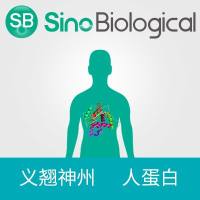Site-Directed Disulfide Cross-Linking to Probe Conformational Changes of a Transporter During Its Functional Cycle: Escherichia coli AcrB Multidrug Ex
互联网
互联网
相关产品推荐

UBQLN1/UBQLN1蛋白Recombinant Human Ubiquilin-1 (UBQLN1)重组蛋白Protein linking IAP with cytoskeleton 1;PLIC-1;hPLIC-1蛋白
¥2328

c-MET/HGFR重组蛋白|MET (Del Ex14), Active
¥3380

Recombinant-Cronobacter-sakazakii-Thiol:disulfide-interchange-protein-DsbDdsbDThiol:disulfide interchange protein DsbD EC= 1.8.1.8 Alternative name(s): Protein-disulfide reductase; Disulfide reductase
¥13720

DDA1/DDA1蛋白Recombinant Human DET1- and DDB1-associated protein 1 (DDA1)重组蛋白Placenta cross-immune reaction antigen 1 (PCIA-1)蛋白
¥1836

重组人PSMA/FOLH1蛋白 (Site-Specific AF 647 Conjugation, His Tag)
¥3480
相关问答

